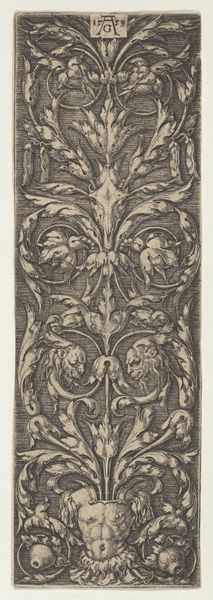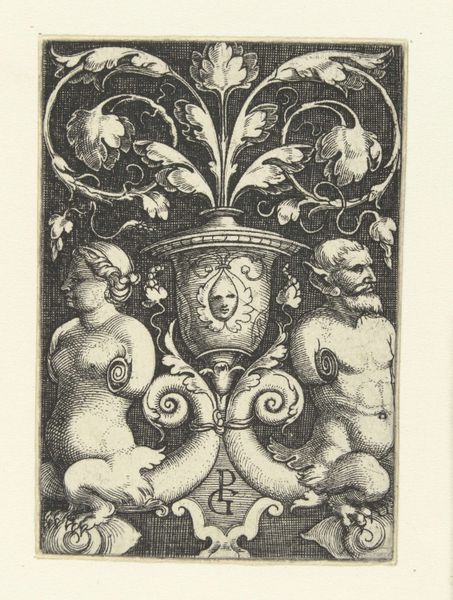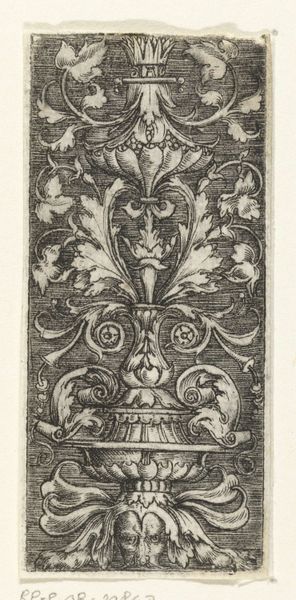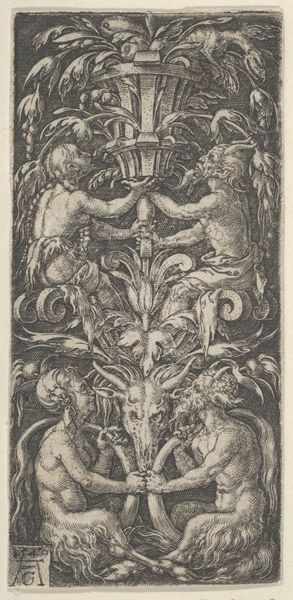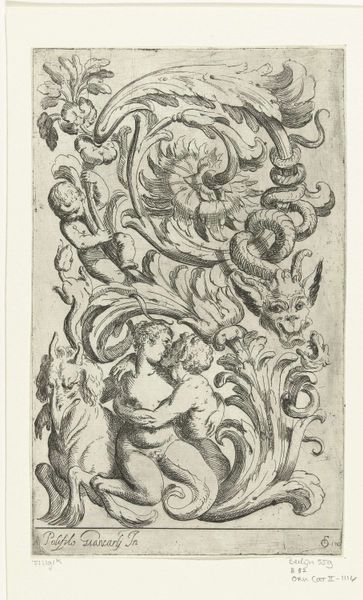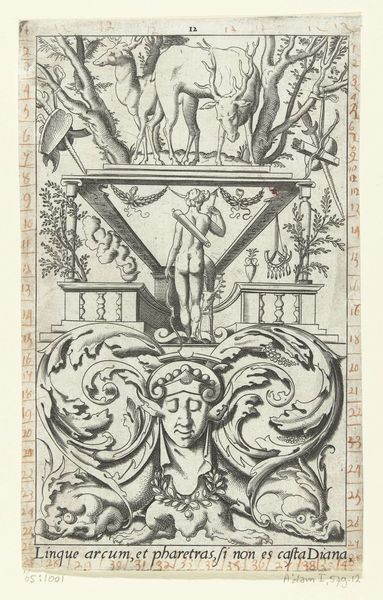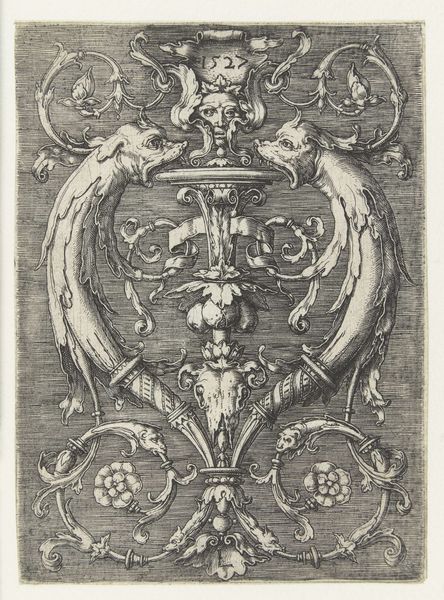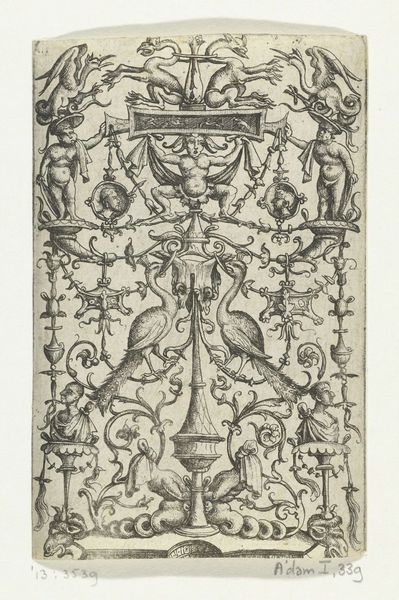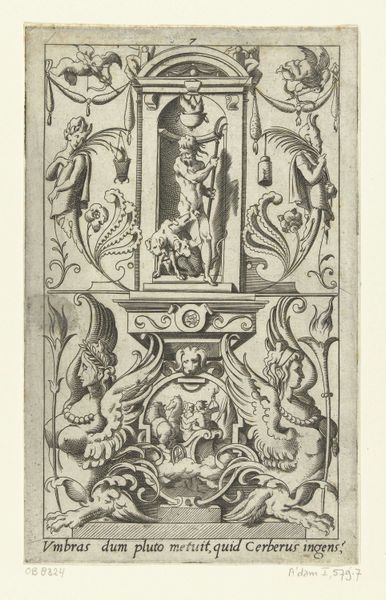
print, engraving
#
portrait
#
allegory
#
pen drawing
# print
#
figuration
#
form
#
11_renaissance
#
child
#
line
#
northern-renaissance
#
decorative-art
#
engraving
Dimensions: height 65 mm, width 40 mm
Copyright: Rijks Museum: Open Domain
Curator: Look at this intricate engraving, “Two Children Beside a Vase” crafted in 1529 by Heinrich Aldegrever, housed right here at the Rijksmuseum. It’s incredible to see such fine detail achieved with engraving techniques of that era, isn't it? Editor: My immediate feeling is ornate whimsy! These plump children flanking that elaborate vase… it’s as if a garden of earthly delights just burst into two-dimensional form. Such dense patterning. Almost claustrophobic, in a fascinating way. Curator: Aldegrever was known for his role within the Northern Renaissance. He engaged heavily with the themes of the Reformation through printmaking. His work, deeply intertwined with the social and intellectual currents of his time, allowed his pieces to engage the viewer far outside the walls of a traditional museum. Editor: Do you think the cherubs were intentionally made cherubic or were children often a little hefty around those parts back then? The details in this vase are equally fantastic, though. It feels like an imaginary plant whose growth is as exuberant as the idea of eternal youth! I suppose in a time of high infant mortality it might be less weird to include death and life together as concepts? Curator: It’s true; allegorical engravings like these often alluded to life's fragility and beauty, often using children and symbolic objects like vases to convey deeper moral or philosophical ideas. This kind of accessible imagery enabled the dissemination of humanist thought through printed materials. The printing press as megaphone, wouldn’t you say? Editor: Absolutely! To ponder that the print and its symbolism has persisted half a millennium! Curator: Seeing how these old prints were perceived publicly opens new views on history itself. What's retained, lost, gained? That is the ultimate collection for us as museum workers and historians! Editor: The past whispering in the lines of a single engraving. Makes you realize you might have more in common with folk who wore ruffs, than someone living centuries into the future!
Comments
No comments
Be the first to comment and join the conversation on the ultimate creative platform.

